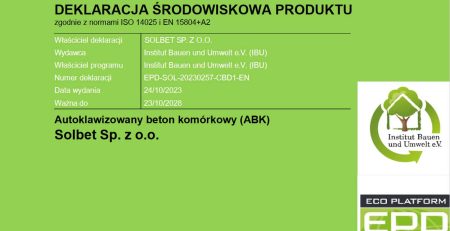Energy-efficient operation of buildings made from cellular concrete
Environmental protection and the reduction of CO2 emissions into the atmosphere are inextricably linked with the need to construct buildings with low energy requirements. The energy efficiency during the use of a building made from cellular concrete results from the properties of the material. Autoclaved cellular concrete owes its high thermal insulation properties to its porous and homogenous structure. Its material skeleton is surrounded by micropockets of air, which are an excellent heat insulator. The porous structure of cellular concrete also ensures an optimum microclimate indoors. Even with large temperature fluctuations outside, the high thermal inertia of cellular concrete makes it possible to maintain a constant room temperature. Construction of warm buildings made out of cellular concrete makes it possible to minimise their energy requirements for heating, and thus to reduce the associated costs and the amount of pollutants emitted into the atmosphere.





